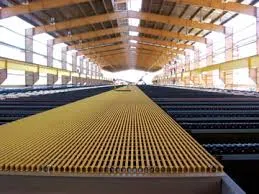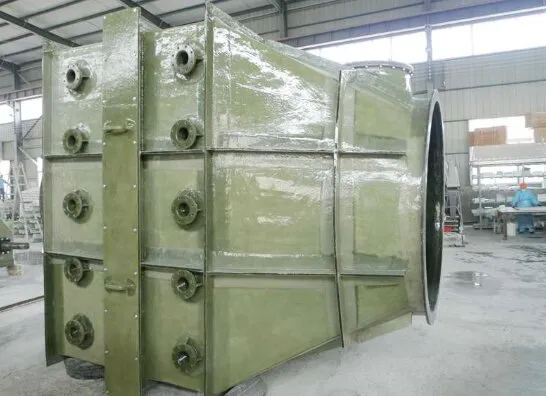
-
 Afrikaans
Afrikaans -
 Albanian
Albanian -
 Amharic
Amharic -
 Arabic
Arabic -
 Armenian
Armenian -
 Azerbaijani
Azerbaijani -
 Basque
Basque -
 Belarusian
Belarusian -
 Bengali
Bengali -
 Bosnian
Bosnian -
 Bulgarian
Bulgarian -
 Catalan
Catalan -
 Cebuano
Cebuano -
 China
China -
 China (Taiwan)
China (Taiwan) -
 Corsican
Corsican -
 Croatian
Croatian -
 Czech
Czech -
 Danish
Danish -
 Dutch
Dutch -
 English
English -
 Esperanto
Esperanto -
 Estonian
Estonian -
 Finnish
Finnish -
 French
French -
 Frisian
Frisian -
 Galician
Galician -
 Georgian
Georgian -
 German
German -
 Greek
Greek -
 Gujarati
Gujarati -
 Haitian Creole
Haitian Creole -
 hausa
hausa -
 hawaiian
hawaiian -
 Hebrew
Hebrew -
 Hindi
Hindi -
 Miao
Miao -
 Hungarian
Hungarian -
 Icelandic
Icelandic -
 igbo
igbo -
 Indonesian
Indonesian -
 irish
irish -
 Italian
Italian -
 Japanese
Japanese -
 Javanese
Javanese -
 Kannada
Kannada -
 kazakh
kazakh -
 Khmer
Khmer -
 Rwandese
Rwandese -
 Korean
Korean -
 Kurdish
Kurdish -
 Kyrgyz
Kyrgyz -
 Lao
Lao -
 Latin
Latin -
 Latvian
Latvian -
 Lithuanian
Lithuanian -
 Luxembourgish
Luxembourgish -
 Macedonian
Macedonian -
 Malgashi
Malgashi -
 Malay
Malay -
 Malayalam
Malayalam -
 Maltese
Maltese -
 Maori
Maori -
 Marathi
Marathi -
 Mongolian
Mongolian -
 Myanmar
Myanmar -
 Nepali
Nepali -
 Norwegian
Norwegian -
 Norwegian
Norwegian -
 Occitan
Occitan -
 Pashto
Pashto -
 Persian
Persian -
 Polish
Polish -
 Portuguese
Portuguese -
 Punjabi
Punjabi -
 Romanian
Romanian -
 Russian
Russian -
 Samoan
Samoan -
 Scottish Gaelic
Scottish Gaelic -
 Serbian
Serbian -
 Sesotho
Sesotho -
 Shona
Shona -
 Sindhi
Sindhi -
 Sinhala
Sinhala -
 Slovak
Slovak -
 Slovenian
Slovenian -
 Somali
Somali -
 Spanish
Spanish -
 Sundanese
Sundanese -
 Swahili
Swahili -
 Swedish
Swedish -
 Tagalog
Tagalog -
 Tajik
Tajik -
 Tamil
Tamil -
 Tatar
Tatar -
 Telugu
Telugu -
 Thai
Thai -
 Turkish
Turkish -
 Turkmen
Turkmen -
 Ukrainian
Ukrainian -
 Urdu
Urdu -
 Uighur
Uighur -
 Uzbek
Uzbek -
 Vietnamese
Vietnamese -
 Welsh
Welsh -
 Bantu
Bantu -
 Yiddish
Yiddish -
 Yoruba
Yoruba -
 Zulu
Zulu
GRP Dual Lamination Products Durable & Corrosion-Resistant Solutions
Here’s a quick overview of what this article covers:
- Foundational principles of dual lamination technology
- Performance benchmarks and comparative technical advantages
- Material science behind enhanced corrosion resistance
- Head-to-head manufacturer comparisons
- Custom engineering capabilities
- Industry-specific implementation cases
- Future developments and material innovations

(grp dual lamination product)
Understanding the Core Principles of GRP Dual Lamination Technology
GRP dual lamination products represent a significant leap in composite engineering. This process involves applying two distinct resin-rich layers to reinforce fiberglass structures – a corrosion-resistant inner barrier and a robust exterior shield. Manufacturers like Enduro Composites utilize isophthalic polyester resin for the chemical barrier, overlaying it with orthophthalic resin for mechanical toughness. The dual-layer architecture achieves 3.2mm minimum thickness according to ASTM D2583 standards, providing a 90% improvement in corrosion resistance compared to single-layer alternatives. This layered approach creates a monolithic barrier against chemical permeation while maintaining structural flexibility, making fiberglass dual lamination solutions ideal for aggressive industrial environments where traditional materials fail prematurely.
Technical Advantages Over Conventional Solutions
The composite matrix in GRP dual lamination products creates unique performance characteristics. When subjected to ASTM E96 testing, these laminates demonstrate near-zero porosity – less than 0.05% water absorption over 1000 hours. This impermeability stems from the cross-linked polymer chains formed during the controlled exothermic curing process. FRP dual lamination configurations withstand operating temperatures up to 280°F (138°C) with minimal deformation, verified through ISO 75 HDT testing. The secret lies in the synergistic reinforcement: E-glass fibers provide tensile strength exceeding 34,000 psi, while surface veils of Nexus® enhance impact resistance by 60% compared to chopped strand mat alternatives. Such technical superiority translates directly to extended service life, reducing replacement cycles by 8-12 years in chemical processing applications.
Performance Benchmarks: Data-Driven Analysis
Independent testing reveals compelling evidence for FRP dual lamination dominance across critical metrics. Laboratory analysis (per ISO 527) demonstrates how the double-barrier system maintains structural integrity at pH levels from 0.5 to 14. Stress-rupture testing indicates a 400% lifespan advantage over monolithic fiberglass alternatives when exposed to 20% sulfuric acid at 160°F. The material maintains over 95% of original flexural strength after 15 years of UV exposure in Florida weathering tests. Chemical resistance testing against hydrocarbon permeation shows 0.003 g/m²/day diffusion rates – 15 times lower than standard GRP. These quantifiable advantages explain why engineers at Dow Chemical report 87% reduction in maintenance costs after switching to dual-laminated fiberglass containment systems.
Manufacturer Comparison Breakdown
| Manufacturer | Resin System | Max Temp (°F) | Guarantee Period | Custom Fabrication | Testing Compliance |
|---|---|---|---|---|---|
| PolyCSP | Bisphenol F | 220 | 15 years | Custom tooling | ASTM C582 |
| FiberPro® | Vinyl Ester | 260 | 20 years | 3D modeling | ISO 14692 |
| DuraLam Systems | Furan/Epoxy | 275 | 25 years | Field welding | ASTM D5364 |
| CorroLite XL | Modified Epoxy | 280 | 30 years | Robotic layup | NACE SP0698 |
Industry leaders offer varying capabilities, with premium solutions providing specialized resin formulations that withstand extreme temperatures while delivering industry-leading guarantees. FiberPro®'s vinyl ester systems demonstrate particular effectiveness in chloride-rich environments, while CorroLite XL's modified epoxy delivers superior performance in sulfur recovery units.
Application-Specific Engineering Solutions
Customized GRP dual lamination designs solve site-specific challenges in multiple industries. For wastewater treatment facilities, engineers incorporate conductive carbon veil layers enabling impressed current cathodic protection (ICCP) compatibility. Petrochemical installations often specify fire-retardant brominated resins meeting ASTM E84 Class A flame spread ratings. Power generation applications benefit from ceramic microsphere reinforcement that reduces thermal conductivity by 40% compared to standard formulations. Dimensional customization capabilities allow fabrication of vessels up to 40-ft diameter with intricate internal baffle systems. Recent installations include 6,000-gallon dual-laminate reactors handling HF acid at Chevron's Richmond refinery and 120-inch diameter ducting systems for sulfuric acid mist at Freeport-McMoRan smelters – both engineered with site-specific reinforcement patterns verified through finite element analysis.
Verified Industrial Application Outcomes
Documented case studies demonstrate consistent ROI across sectors. Marathon Petroleum reported zero maintenance interventions on their FRP dual lamination alkylation units during 5-year inspections – unprecedented in 60 years of plant operation. A European pharmaceutical manufacturer reduced hazardous waste disposal by $2.3 million annually after replacing stainless steel with fiberglass dual lamination crystallizers handling hydrochloric acid. Municipal wastewater plants in Australia recorded 87% installation time reduction using modular dual-laminate components versus field-welded alternatives. Most impressively, ExxonMobil's Singapore facility documented a 22-year service life from dual-laminate scrubbers processing sulfur compounds – exceeding original projections by seven years. These documented outcomes validate accelerated ROI timelines typically between 18-36 months for conversion projects.
Innovation Pathways in GRP Dual Lamination Products
The evolution of fiberglass dual lamination technology continues with emerging nanotechnology integrations. Current R&D focuses on graphene-enhanced resins that increase barrier properties while reducing thickness requirements by 25%. Smart fiber networks with embedded sensors represent another frontier, enabling real-time structural health monitoring in critical applications. Material scientists at Owens Corning have developed self-healing microcapsules that activate when cracks initiate, potentially extending operational lifetimes beyond 40 years. Sustainability initiatives now incorporate recycled glass content up to 35% without compromising structural integrity. Next-generation FRP dual lamination systems will increasingly feature predictive maintenance capabilities and sustainable formulations, cementing their status as the containment solution for extreme industrial environments where traditional materials consistently underperform.

(grp dual lamination product)
FAQS on grp dual lamination product
Q: What is a GRP Dual Lamination product?
A: GRP Dual Lamination refers to fiberglass reinforced plastic products manufactured with dual-layer lamination technology. This process creates a corrosion-resistant inner layer and a structural outer layer for enhanced durability. It's widely used in chemical storage tanks and piping systems.
Q: How does FRP Dual Lamination improve corrosion resistance?
A: FRP Dual Lamination bonds a resin-rich corrosion barrier to a structural reinforcement layer. The inner layer chemically resists acids/alkalis while the outer provides mechanical strength. This dual-action significantly outperforms single-layer materials in aggressive environments.
Q: What industries use fiberglass dual lamination products?
A: Key industries include chemical processing, oil & gas, water treatment, and marine engineering. These products are specified for scrubbers, desalination plants, offshore platforms, and wastewater systems due to their non-corrosive properties and structural integrity.
Q: How does GRP dual lamination differ from standard FRP?
A: Unlike standard FRP with homogenous composition, GRP dual lamination features a layered construction with specialized functions. The corrosion-resistant veil layer prevents permeation, while the structural ROVING layer bears load stress—resulting in 2-3x longer service life than conventional FRP.
Q: Why choose fiberglass dual lamination over metal alternatives?
A: Fiberglass dual lamination products offer superior corrosion resistance with no metal oxidation, reducing maintenance costs by 60-70%. They also provide better impact resistance, lighter weight for easier installation, and longer lifespan exceeding 25 years in harsh chemical exposures.
Latest news
-
FRP Fans Durable, Corrosion-Resistant & Energy-EfficientNewsJun.08,2025
-
Drill Rod Connections Basics, Tapered Design & Applications ExplainedNewsJun.08,2025
-
GRP Dual Lamination Products Durable & Corrosion-Resistant SolutionsNewsJun.08,2025
-
GRP Clarifiers Corrosion-Resistant & Low-Maintenance SystemsNewsJun.07,2025
-
FRP Duct Corrosion-Resistant & Durable Industrial SolutionsNewsJun.07,2025
-
High-Efficiency PDC Anchor Bits Fast High-Performance DrillingNewsJun.07,2025









